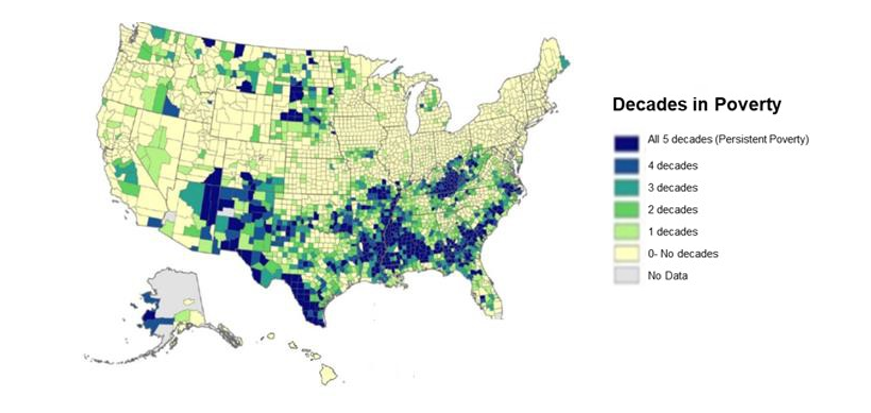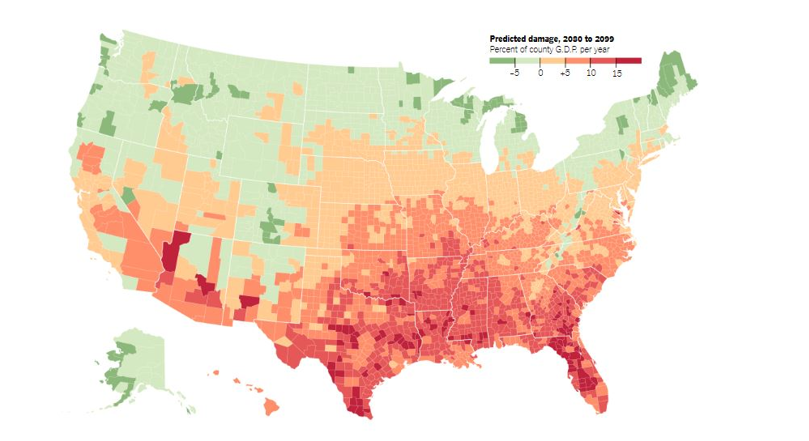CDFIs Positioned to Receive Greenhouse Gas Reduction Funds for Underserved Communities in Emerging Climate Crisis
October 31st, 2023
By Sara Miller, Senior Policy Analyst
Community Development Financial Institutions (CDFIs) throughout the nation are building capacity in preparation to address the emerging climate crisis. A key aspect of this work is preparing to deploy the unprecedented federal Greenhouse Gas Reduction Funds (GGRF). The GGRF, as enacted through the Inflation Reduction Act, will distribute $27 billion through three programs designed to leverage private investment to reduce greenhouse gas emissions, lower energy costs for consumers, and spur economic revitalizations in underserved, low- and moderate-income communities. CDFIs, as local financial institutions and community development organizations working in these communities are well positioned to ensure GGRF funds are accessible to communities like the Deep South, which is acutely challenged by climate change and disasters.
Deep South Communities Disproportionately Experience Environmental Challenges
The emerging climate crisis will likely affect Deep South communities on several fronts, including natural disasters, health challenges, and economic crisis. The Deep South is projected to be among the most impacted regions by the incoming climate crisis in the United States with damage projected to widen existing income inequality in many places that have already had resources extracted for centuries.[1] Additionally, the Deep South experiences several major weather-related disasters every year. In the last five years, the Deep South has declared more than 60 major weather-related disasters in more than 2000 state and local jurisdictions. The maps below show how many of the same areas that have been in persistent poverty, or communities that have 20% of more persons living in poverty for more than 30 years, are also the same areas that are projected to have the most negative effects from the climate crisis.
Figure 1: Counties with Poverty Rates over 20% by Number of Consecutive Decades
Source: Rural Policy Research Institute Center for Applied Research and Environmental Studies
Figure 2: Projected Damage due to Climate Change from 2080 to 2099 in the United States
Source: Brad Plumer and Nadia Popovich, “As Climate Changes, Southern States Will Suffer More than Others,” The New York Times,
GGRF is Designed to Address Climate Challenges Despite Relief Investment Structure
Like federal relief for the pandemic, the Greenhouse Gas Reduction Fund (GGRF) was enacted in 2022 as part of the Inflation Reduction Act to address the emerging climate crisis. The GGRF includes funding programs totaling $27 billion to mobilize financing for projects that reduce greenhouse gases and air pollution in low-income and disadvantaged communities. The program will direct funds through community lenders like CDFIs, nonprofit organizations, and state and local governments.
The GGRF will be implemented through three competitive grant programs. Those programs include the following:
National Clean Investment Fund (NCIF)
The NCIF will distribute $14 billion to 2-3 national nonprofit awardees who will use the funds along with private investments to finance clean technology projects focused on energy independence and a net zero economy.
Clean Communities Investment Accelerator (CCIA)
The CCIA will distribute $6 billion to 2-7 nonprofit awardees that will provide financial support and technical assistance to build the capacity of community lenders like CDFIs, credit unions, minority depository institutions, and others to provide financing for cost-saving and pollution-reducing clean energy projects for households, small businesses, and community institutions like schools.
Solar for All
The Solar for All program will distribute $7 billion to fund up to 60 grants (at least one in each state) to local and state governments and nonprofits to develop or expand residential and community solar projects for low-income and disadvantaged communities.
CDFIs have Strong Track Records of Deploying Federal Relief Dollars
CDFIs exist to provide financial services to historically underserved communities. For HOPE, and many others, this has often included finding innovative ways to deploy resources to those who need them most in times of disaster recovery and economic downturns like Hurricane Katrina or the COVID-19 pandemic. Often, disaster relief programs are designed in such a way that reinforce existing inequity and require intervention from mission-based organizations to ensure assistance is distributed to those who are both more in need of it and more likely to be underserved by mainstream, or market, providers. For instance, CDFIs were instrumental in the deployment of pandemic relief to small businesses in the Deep South. One-third of the Paycheck Protection Program (PPP) loans under $150,000 in Mississippi and Louisiana were made by CDFIs which is seven times more small PPP loans in these states than the five largest banks in the country combined.
CDFIs are Working to Build Capacity for GGRF Deployment
As these programs are being implemented, it is important to ensure that CDFIs with a track record of providing financial services to the most underserved communities are included in the strategy to get these funds where they are needed most. HOPE, and several CDFI and Credit Union partners like the Community Builders of Color Coalition’s Justice Climate Fund, the African American Alliance of CDFI CEOs, Inclusiv, the Opportunity Fund Network, and others are working to ensure that funds get to the underserved communities, like those in the Deep South, that will be more impacted by the emerging climate crisis and who face barriers to maximizing the impact of relief funds in their homes and communities.
[1] Nadja Popovich. (2017). “As Climate Changes, Southern States Will Suffer More Than Others”. nytimes.com. https://www.nytimes.com/interactive/2017/06/29/climate/southern-states-worse-climate-effects.html , [Accessed 31-10-2023]








